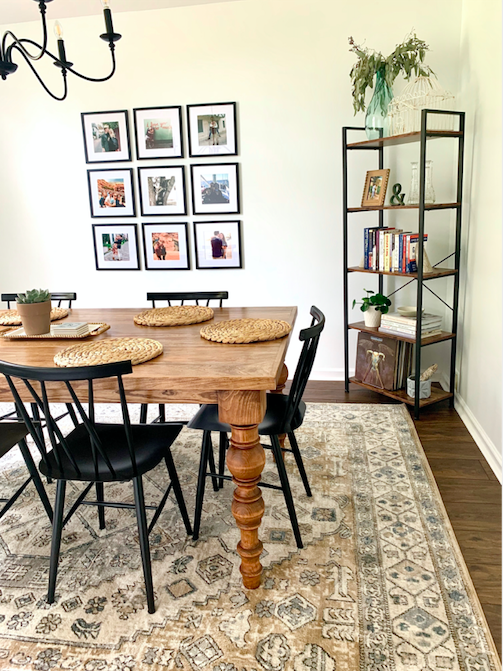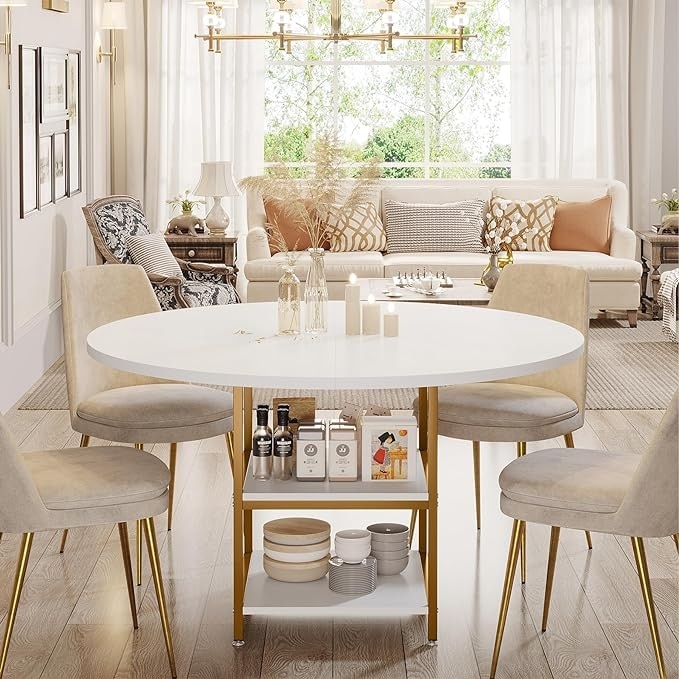Enhance Your Dining Room with Unique and Modern Dining Room Table Legs
From Traditional to Modern: Discover the Suitable Dining Area Table Legs for Your Design
The choice of eating room table legs plays an essential role in defining the total personality of your area, bridging the void between conventional workmanship and modern aesthetics. While traditional styles such as cabriole and turned legs stimulate a sense of timeless elegance, modern styles like barrette and geometric options provide a chance for striking visual interest. Assessing the ideal equilibrium in between these styles requires a nuanced understanding of your existing design and personal preference. As you think about these components, the question stays: how can you seamlessly incorporate these diverse leg designs to develop a harmonious eating experience?
Recognizing Table Leg Styles
The selection of dining area table leg designs can substantially influence both the aesthetic appeals and functionality of the area. Each leg style adds special practical features and visual elements, satisfying diverse layout preferences and use requirements. Recognizing these styles is important for selecting the appropriate table that straightens with your total indoor design vision.
For example, tapered legs use a clean, timeless appearance that can boost an area's beauty, while pedestal bases supply security and take full advantage of legroom, making them perfect for smaller sized rooms. Barrette legs, a characteristic of mid-century modern-day layout, introduce a commercial style, enabling a ventilated, open feel. Trestle legs stimulate rustic charm, supplying robust assistance and a sense of eternity.
Wooden legs can bring warmth and structure, whereas metal alternatives typically communicate a smooth, contemporary ambiance. Ultimately, comprehending table leg styles is vital for creating a natural dining location that mirrors personal design while guaranteeing practicality and comfort.
Standard Table Leg Options
When selecting dining-room table legs, typical options commonly personify timeless style and craftsmanship. These designs reflect an abundant heritage and a dedication to quality, making them optimal for those that value timeless visual appeals.
Among the most famous standard leg designs is the cabriole leg, characterized by its graceful curved shape. This design typically features decorative makings and is most commonly discovered in Queen Anne and Chippendale furniture. One more preferred option is the turned leg, which boasts a series of smooth, rounded shapes that provide a traditional look while preserving stability.
Additionally, the straight leg, while straightforward, provides a durable and unadorned structure that can mix seamlessly with a variety of tabletop designs. For those attracted to ornate detailing, claw-and-ball feet legs evoke a sense of magnificence and can act as a sensational prime focus in any dining space.
Last but not least, stand bases, although not strictly legs, supply a different standard option that permits enough legroom and can be perfectly sculpted. Each of these conventional leg styles contributes to the general atmosphere of a dining room, marrying function with aesthetic allure.

Modern Table Leg Designs
Modern table leg designs use a diverse variety of designs that emphasize innovative materials and clean lines. These styles frequently focus on performance while serving as striking centerpieces within a dining space. Minimal aesthetics prevail, with legs crafted from products such as steel, glass, and engineered wood, which add to a ventilated and modern feeling.
One prominent design is the hairpin leg, identified by its slim, conical structure that offers security without frustrating the tabletop (dining room table legs). This design is commonly located in mid-century modern-day furnishings and can effortlessly complement various table forms. An additional fad is making use of geometric forms, where legs might handle angular or asymmetrical kinds, including aesthetic passion and a touch of virtuosity

Blending Styles for Special Areas
Often, property owners seek to produce redirected here special dining areas that show their personal design by mixing various design aspects. This technique permits the unification of diverse looks, leading to an unified yet distinctive environment. For circumstances, matching a rustic wood table with smooth, modern-day steel legs can create an attractive contrast that boosts the area's overall charm.
In addition, incorporating vintage table legs with contemporary tabletops can stimulate a feeling of background while preserving a modern sensibility. Such combinations not just display specific taste yet also motivate creative thinking, visite site enabling property owners to curate a room that feels both individual and inviting.
Color plays an important function in this blending procedure; choosing table legs that complement or comparison with the existing color design can enhance aesthetic rate of interest. Whitewashed legs can soften the daring of a dark table surface area, creating a balanced visual.
Tips for Picking the Right Legs
Selecting the right table legs is vital for attaining both performance and aesthetic allure in your eating room. Begin by considering the general style of your space. Conventional settings gain from legs that feature complex carvings or turned layouts, while contemporary spaces may call for streamlined, minimal styles.
Following, analyze the elevation and security of the legs. dining room table legs. Basic dining tables vary between 28 to 30 inches in elevation, so make certain the legs enhance this measurement for convenience. Furthermore, durable materials, such as wood or steel, can enhance security and durability
Evaluate the leg form as well-- choices include right, tapered, or stand layouts. Straight legs supply a traditional look, while tapered legs can include a touch of elegance. Pedestal bases offer adequate visit this website legroom and are perfect for smaller sized rooms.
Conclusion
In summary, selecting the ideal dining-room table legs requires careful factor to consider of both standard and modern styles. Traditional options such as cabriole and turned legs use timeless style, while contemporary styles like barrette and geometric shapes offer a contemporary touch. By balancing leg design, height, and material with the total décor, a cohesive and inviting ambience can be attained. Inevitably, the chosen table legs ought to show the preferred visual, improving the eating experience within the area.
The selection of dining area table leg styles can substantially influence both the looks and capability of the room. Inevitably, recognizing table leg designs is important for developing a natural eating area that mirrors individual style while making sure usefulness and convenience.One of the most renowned traditional leg designs is the cabriole leg, characterized by its stylish rounded form. Straight legs supply a classic look, while conical legs can include a touch of elegance.In recap, selecting the excellent dining room table legs needs mindful factor to consider of both modern-day and traditional designs.